In This Issue
- Distribute and Win
- Oracle Taps Verizon
- TechOne Picks NetApp
- Report from the CEO
- SN: Transform World
- Computing with SDN
- Wyden on Encryption
- Cloud: Where It’s At
- Innovation Begins
- Face of Hybrid Cloud
- End-to-End Resiliency
- Return of Fragmented
- Edge Computing: Rev
- Machine Learning & AI
- Escaping Mainframes
- Cloud and Fog in IoT
- Coming DCIA Events
Distribute and Win
Excerpted from Swarajya Magazine Report by Rajeev Srinivasan

There are many instances, both in nature and business, of the virtues of distributed systems as compared to monolithic systems.
One of the most obvious is the rise of open-source software, as argued persuasively by Eric Raymond in The Cathedral and the Bazaar.
He argues that “cathedrals” (hierarchical, well-organized companies which are the western norm, e.g., IBM, Microsoft) will in the long run be defeated by “bazaars” (loosely federated groups of workers).
In the context of operating systems (the software that controls devices), and specifically of the UNIX and Linux systems (which is what Eric was focusing on), this prophecy has largely come true.
Microsoft, so dominant in the last century, has now lost its monopoly.
If you consider smartphones and tablets as well, the newcomer operating system Android (from Google) now accounts for as much as 60 percent of the world’s devices, with Apple’s iOS running another 10 per cent… Read More
Oracle Taps Verizon for Global Cloud Migration
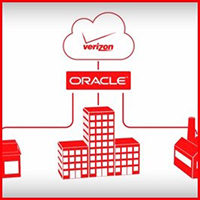
Oracle is now offering its customers reliable, secure, enterprise-class connections to its cloud via Verizon’s Secure Cloud Interconnect Services enabling enterprises to seamlessly move workloads to the Oracle cloud.
With Verizon Secure Cloud Interconnect for Oracle FastConnect, customers can now connect to Oracle cloud data center sites located in the US and Europe.
Enterprises can take advantage of the service’s software defined networking (SDN) capabilities to gain greater control and agility over their cloud environments.
This includes consumption-based bandwidth, pre-provisioned on-demand resources, controlled application performance and varying classes of service that can be easily provisioned via Verizon’s Dynamic Network Manager.
According to a recent cloud research report conducted by Turbonomic and Verizon, multi-cloud deployments are growing in popularity.
More than 70 percent of large enterprises surveyed currently use or plan to use multiple clouds to deliver IT services in the next three years… Read More
TechOne Picks NetApp to Improve Profitability & Efficiency
Excerpted from Globe Newswire Report
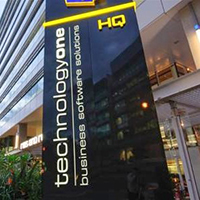
NetApp today announced that TechnologyOne (TechOne) has implemented NetApp Private Storage (NPS) on a FlexPod data center platform with NetApp MetroCluster technology to help reduce costs and increase performance for its global customers.
TechOne is Australia’s largest enterprise software company, with offices in six countries.
The company’s software powers its diverse range of customers, which includes more than 1,000 leading corporations, government departments, financial institutions, universities, and statutory authorities around the world.
After the floods in Queensland in 2011 damaged TechOne’s data center, the Brisbane- headquartered company decided to go all in with Amazon Web Services (AWS) to reduce risk.
AWS did just that, allowing TechOne to have up to 99.9% resiliency.
However, TechOne needed a storage solution that also provided the same levels of reliability and flexibility.
Because many of TechOne’s customers have seasonal workloads, TechOne needed a storage solution that could react in real time… Read More
Report from DCIA CEO Marty Lafferty
 The Department of Health and Human Services (HHS) this week published Guidance on the Health Insurance Portability and Accountability Act (HIPAA) & Cloud Computing, providing important new insights for cloud computing service providers (CSPs).
The Department of Health and Human Services (HHS) this week published Guidance on the Health Insurance Portability and Accountability Act (HIPAA) & Cloud Computing, providing important new insights for cloud computing service providers (CSPs).
Can a HIPAA-covered entity or business associate (BA) use a cloud service to store or process electronic protected health information (ePHI)?
Yes, provided the vendor enters into a business associate agreement (BAA) that specifies how HIPAA compliance will be maintained.
A CSP that meets the definition of a BA, however, by creating, receiving, maintaining or transmitting PHI on behalf of a covered entity, must comply with applicable provisions of HIPAA, regardless of whether it has executed a BAA.
Can providers use mobile devices to access ePHI from a cloud platform?
Yes, again, as long as appropriate safeguards and BAAs are in place.
Also covered are such critical issues as de-identifying information to be maintained in the cloud, auditing of CSPs, and storage of ePHI outside the United States.
While HHS emphasizes the importance of data encryption, it warns not to rely on encryption at the expense of additional protections.
Encryption protects ePHI by significantly reducing the risk of information being viewed by unauthorized persons, but does not ensure that the data remains available to authorized persons during emergency or disaster situations, nor does it encompass administrative analysis of risks to the ePHI as well as physical safeguards for systems and servers storing the PHI.
Under HIPAA, CSPs must report security incidents involving ePHI of a HIPAA covered entity or BA, and implement policies and procedures to address and document security incidents.
In general, HIPAA does not require CSPs and other BAs to maintain ePHI past the time it was used to serve a covered entity, but they must return or destroy all PHI at termination of the BAA.
We urge DCINFO readers to invest time to review the guidance and contact us with questions. Share wisely, and take care.
Satya Nadella: Cloud Helps People Transform World
Excerpted from The Fire Hose Blog
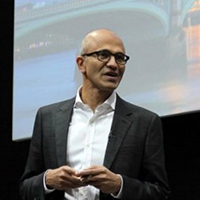
At Microsoft’s Transform conference in London last week, Microsoft CEO Satya Nadella hailed cloud computing as a powerful tool that will help people transform the world.
He said artificial intelligence (AI) and machine learning will soon become vital parts of society, while still being controlled and shaped by humans.
“We are not building an AI-first world.”
“We are building a people-first world with AI everywhere,” Nadella told the audience of nearly 500 developers, business leaders and journalists.
“Ultimately, technology is in the hands of humanity.”
“It is up to us to imagine the future and shape it using technology.”
Speaking to an audience of nearly 500 developers, business leaders and journalists, Nadella said he was excited by how UK organizations are continuing to embrace the cloud… Read More
New Computing Era with SDN Data Centers
Excerpted from CloudTech Report by Martin Cooper
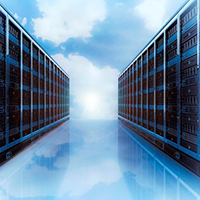 The delivery of IT services on-demand is becoming an increasingly common ambition for enterprises.
The delivery of IT services on-demand is becoming an increasingly common ambition for enterprises.
As businesses are introduced to public cloud platforms such as Amazon Web Services (AWS), they are expecting the same flexibility, real-time delivery and cost savings from services across the entire IT landscape.
In turn, this is leading to a brand new world of computing, one in which old client-server models are being turned on their heads, replaced by mobile and cloud computing.
By necessity, this is also leading to radical changes across the entire IT infrastructure layer in the data center.
Let’s take storage as an example.
For decades, storage has been defined by closed, proprietary, and monolithic hardware-centric architectures, built for single applications and local network access, with limited redundancy and manual management.
And in a traditional data center, each component of the infrastructure has an independent set of management requirements.
Trying to provide dynamic workload delivery is a complex and time-consuming process; manual infrastructure reconfiguration is required… Read More
Ron Wyden on Encryption, Data Privacy, Security
Excerpted from NY Times Report by Cecilia Kang

After Apple and the FBI made their battle over encryption public in February, members of Congress quickly jumped into the debate.
Some lawmakers promised new rules that would give authorities more access to smartphones, while others promised to fight off those laws.
Yet after several hearings and bills, and the formation of Congressional working groups, little has been done to resolve the central tug of war between the tech industry and federal authorities over civil rights versus national security.
Law enforcement officials have argued that hundreds of criminal investigations have been held up by their inability to get access to locked smartphones and encrypted apps.
Privacy advocates and tech companies say such access would cost people their personal information and lead to a slippery slope of surveillance.
The debate has flared anew recently, with Open Whisper Systems, maker of the encrypted messaging app Signal… Read More
From Disaster Zones to Board Rooms, Cloud Is Where It’s at
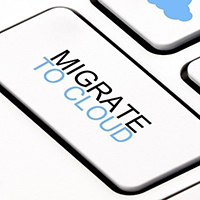
Whether it’s a shift in business triggered by political or socio-economic events, disruption caused by new technology, environmental disasters, epidemics, or diseases; more and more often, we are becoming bystanders to events that are simply out of our control.
Previously these unforeseen events and their corresponding challenges would have been debilitating for business.
Nowadays with the correct technology in place, these can be mitigated and sometimes even turned into unexpected business opportunities.
We can classify three key areas that have significant impact on the health of a business.
Environmental disasters are often unpredictable and complex and so is the business destruction that they can create.
Whether it’s extreme flooding or tidal waves, a collapsing building, an industrial facility on fire, oil and environmental spillages or air pollution, the final death-tolls and longer-term environmental impacts are determined by the speed of action in the aftermath of a disaster. Organizations will be pulled apart by consumers, government, and other businesses alike if their response time is slow… Read More
Cloud Turning Point: Innovation Phase Begins
Excerpted from IBM Blog by Marie Wieck
 In the past, when I’ve spoken to clients about cloud computing, those conversations were mostly with line-of-business managers focused on cutting costs and getting new, customer-facing applications up and running quickly.
In the past, when I’ve spoken to clients about cloud computing, those conversations were mostly with line-of-business managers focused on cutting costs and getting new, customer-facing applications up and running quickly.
Today, the tide has turned, as chief executives and other line leaders want to know how cloud computing can help them transform their entire business, create new models and spur innovation.
While much of the attention in cloud has been focused on public infrastructure deployments, they are only part of the overall story.
Now those conversations reflect an intense interest in digital transformation through open, industry-specific hybrid cloud solutions that deliver higher value with analytics and cognitive capabilities.
Overwhelmingly, what we are hearing from clients and the market is the need for a clear path to extend the significant IT investments they have made by leveraging new, innovative cloud services, while ensuring their data is protected.
With hybrid cloud, business leaders don’t have to rip out and replace existing systems; they can focus on elevating their business value… Read More
The Changing Face of Hybrid Clouds
Excerpted from IT Business Edge Report by Arthur Cole
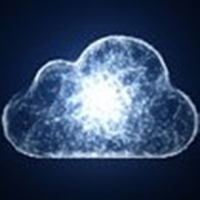
The hybrid cloud is considered to be the “safe zone” between the rigidity and poor scalability of private resources and the lack of control in the public domain.
But while it was always expected that hybrids would one day morph into a seamlessly integrated, broadly distributed data ecosystem, that vision is starting to look less feasible, and less desirable, as experience with real cloud architectures grows.
In a recent post on Forbes, Moor Insights & Strategy analyst John Fruehe describes the “hybrid cloud dilemma” in pretty stark terms.
He says that from both a security and logistics standpoint, a fully integrated hybrid cloud is proving extremely hard to implement.
Rather, current thinking in IT circles is starting to favor a “hybrid cloud environment” in which data and resources may be shared across multiple domains and providers, but individual compute environments will exist in only one.
So rather than try to craft a single computing architecture that follows data wherever it goes, the enterprise would do better to focus… Read More
End-To-End Resiliency in Hybrid Cloud World
Excerpted from Forbes Report by Hugo Moreno
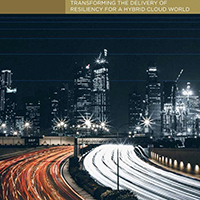
Modern IT operations are undergoing upheaval, brought on by a perfect storm of internal and external forces.
While traditional IT services once ran solely from central data centers designed for client/server architectures or mainframes, many IT departments are now turning to hybrid cloud – a blend of traditional and cloud services – for greater agility and flexibility to meet changing business requirements.
These valuable resources also provide reliable platforms for running emerging technologies, such as cognitive computing, sophisticated analytics and a new generation of mobile applications.
This approach is catching fire: the technology researcher IDC predicts that more than 80% of IT organizations will commit to hybrid architectures by 2017.
A recent Forbes Insights report, “The Need to Bring a Paradigm Shift in Business Resiliency,” sponsored by IBM, examines the implications of these developments.
With hybrid cloud architectures as a foundation, enterprise workloads can originate from a wide range of sources… Read More
The Return of Fragmented Computing?
Excerpted from Virtualization Review Report by Dan Kusnetzky

Recently, I spoke to the folks at Kaleao about the company’s “hyperconverged” ARM-based servers and server appliances.
While I found the discussion and the products the company is offering quite intriguing, I couldn’t help but see this announcement within a larger context.
I guess that’s the burden of being a software archaeologist. Our discussion focused on today’s market and the desire of many enterprises to swing the pendulum back from a complex, overly distributed computing environment and re-converge computing functions on an inexpensive, but very powerful and scalable computing environment.
The company described how it looked at the same problems everyone sees, but tried to think differently about possible solutions.
The company decided that it would start with a clean sheet of paper and build a computing environment based upon ARM processors and use the best of today’s massively parallel hardware and software designs.
Here’s how the company describes its offering, KMAX… Read More
Edge Computing: New Revenue Opportunity
Excerpted from MSPmentor Blog by Marvin Blough
 Edge computing may be the next great opportunity for MSPs.
Edge computing may be the next great opportunity for MSPs.
As customer demand for cloud services increases and the Internet of Things (IoT) gains traction, the need for servers that operate at the edge of the network is going to explode.
As such, it is bound to create a vast new market for MSPs to apply their expertise with remote service delivery.
Edge computing wouldn’t even be a thing if the cloud didn’t exist.
Here’s why: As businesses push more and more of their computing to cloud infrastructures, they are starting to come to terms with certain limitations.
Those limitations can seriously interfere with a company’s plans to leverage data analytics and execute IoT implementations.
The primary issue with relying on cloud infrastructure has to do with latency, which tends to increase based on the distance that data has to travel.
Accessing a cloud infrastructure hundreds or thousands of miles away is perfectly acceptable for certain kinds of processing and storage… Read More
Power of Machine Learning & AI in Data Centers
Excerpted from CloudTech Report by Richard Jenkins
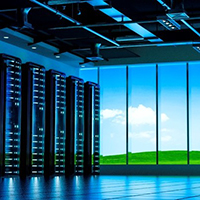 Data is everywhere – masses of it.
Data is everywhere – masses of it.
And it’s helping businesses to make better decisions across departments.
Marketing can utilize data to discover the effectiveness of email campaigns, finance can analyze past trends to make predictions and projections for the future, and sales can target their follow-up with detailed information on prospective customers.
But data is only useful when business tools transform it into valuable information.
Data intelligence through algorithms and analytics make business data relatable.
The most advanced solutions require enormous amounts of data to be able to offer accurate insight to users.
As a result, many solutions are cloud based, as most businesses do not have the IT capacity or budget to store this amount of information.
So where does all this data reside? The data center… Read More
Enterprises Escaping Mainframe Island?
Excerpted from Network World Report by Dan Kusnetzky
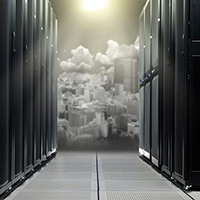 From time to time, a vendor’s PR rep sends me a note about the “problem” that is caused by mainframe systems being at the hub of enterprise computing.
From time to time, a vendor’s PR rep sends me a note about the “problem” that is caused by mainframe systems being at the hub of enterprise computing.
In reality, these systems often offer more integrated processing power, larger memory capacity and more efficient database operations than a distributed, x86-based solution.
The most recent pitch I received included this sentence: “How the dusty old legacy mainframe holds back cloud initiatives… and how it can be modernized.”
Part of the reason mainframes won’t die is that often they simply cost less to operate when all of the costs of ownership and workload operations are considered.
While I was with industry research firm IDC (I was IDC’s vice president of system software research for a time), my team would conduct extensive cost-of-ownership studies to determine the relative costs of a workload or an IT solution hosted on different platforms.
Surveys would be conducted to learn the actual costs incurred by companies and then an overall cost of ownership… Read More
Roles of Cloud & Fog in IoT Revolution
Excerpted from Business Insider Report by Andrew Meola
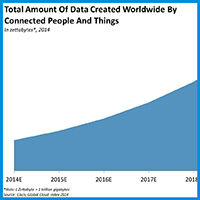 The Internet of Things (IoT) is starting to transform how we live our lives, but all of the added convenience and increased efficiency comes at a cost.
The Internet of Things (IoT) is starting to transform how we live our lives, but all of the added convenience and increased efficiency comes at a cost.
The IoT is generating an unprecedented amount of data, which in turn puts a tremendous strain on the Internet infrastructure. As a result, companies are working to find ways to alleviate that pressure and solve the data problem.
Cloud computing will be a major part of that, especially by making all of the connected devices work together.
But there are some significant differences between cloud computing and the Internet of Things that will play out in the coming years as we generate more and more data.
Below, we’ve outlined the differences between the cloud and the IoT, detailed the role of cloud computing in the IoT, and explained “fog computing,” the next evolution of cloud computing.
Cloud computing, often called simply “the cloud,” involves delivering data, applications, photos, videos, and more over the Internet to data centers. IBM has helpfully broken down cloud computing into six different categories… Read More
Coming Events of Interest
Security of Things World USA — November 3rd-4th in San Diego, CA. SoTWUSA has been designed to help you find pragmatic solutions to the most common security threats facing the IoT.
Rethink! Cloudonomic Minds — November 21st-22nd in London, England. R!CM will cover how IoT is impacting cloud strategies and how to take advantage of these two key technology trends.
Government Video Expo — December 6th-8th in Washington, DC. GVE is the East Coast’s largest technology event for broadcast and video professionals, featuring a full exhibit floor, numerous training options, free seminars, keynotes, panel discussions, networking opportunities, and more.
CES 2017 — January 5th-8th in Las Vegas, NV. More than 3,800 exhibiting companies showcasing innovation across 2.4 million net square feet, representing 24 product categories.
Industry of Things World USA — February 20th-21st in San Diego, CA. Global leaders will gather to focus on monetization of the Internet of Things (IoT) in an industrial setting.
fintech:CODE — March 16th-17th in London, UK. A new international knowledge exchange platform bringing together all DevOps, IT, and IoT stakeholders who play an active role in the finance and tech scene. Key topics include software development, technical challenges for DevOps, DevOps security, cloud technologies and SaaS.
retail:CODE — March 16th-17th in London, UK. 20 real-life case studies, state-of-the-art keynotes, and interactive World Café sessions, 35+ influential speakers will share their knowledge at the intersection of the retail and technology sectors.
